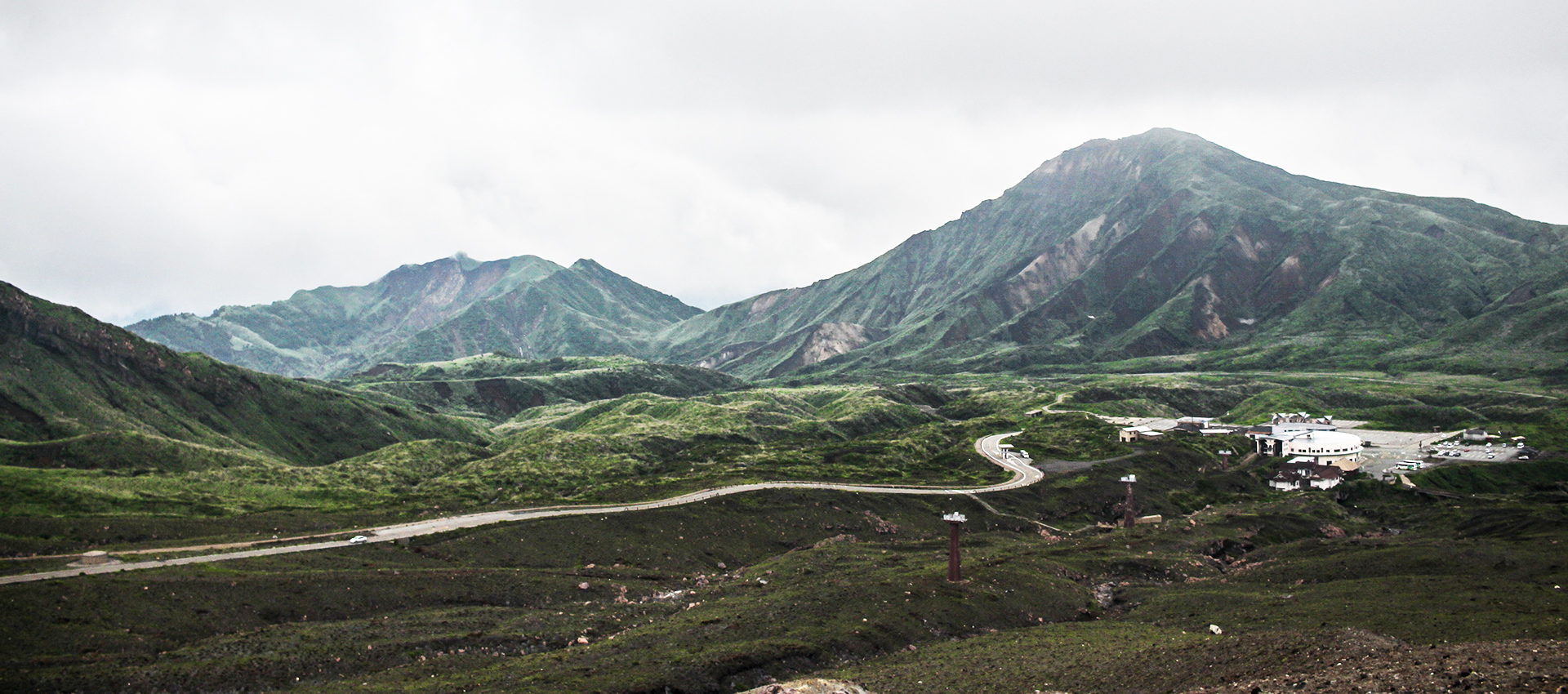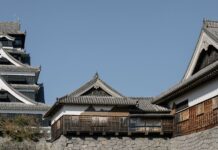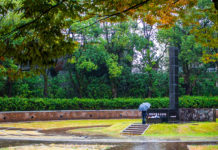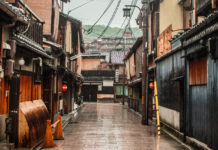Driving through the Kumamoto countryside, the rolling green hills slowly deteriorate into a barren moonscape as we ascend Mount Aso. The Jurassic Park soundtrack matches the sense of foreboding in the grey afternoon air. The weather is certainly not ideal. But, it’s not every day one can visit an active volcano, so we won’t be leaving without peering into the Nakadake crater.
Japan’s most active volcano
Located 1.5 hours’ drive from Kumamoto City, Mount Aso is one of the largest and most active volcanoes in Japan. It bears explaining that Aso is more of a ‘geo park’ than one single peak. A series of ancient eruptions sculpted its current form and the whole area is actually a caldera—essentially a gigantic crater. And this one happens to be one of the largest calderas in the world. It runs 17km east to west, 25km north to south and occupies roughly 350 square kilometres. Within this caldera are multiple peaks, craters and geosites, as well as around 70,000 human inhabitants.
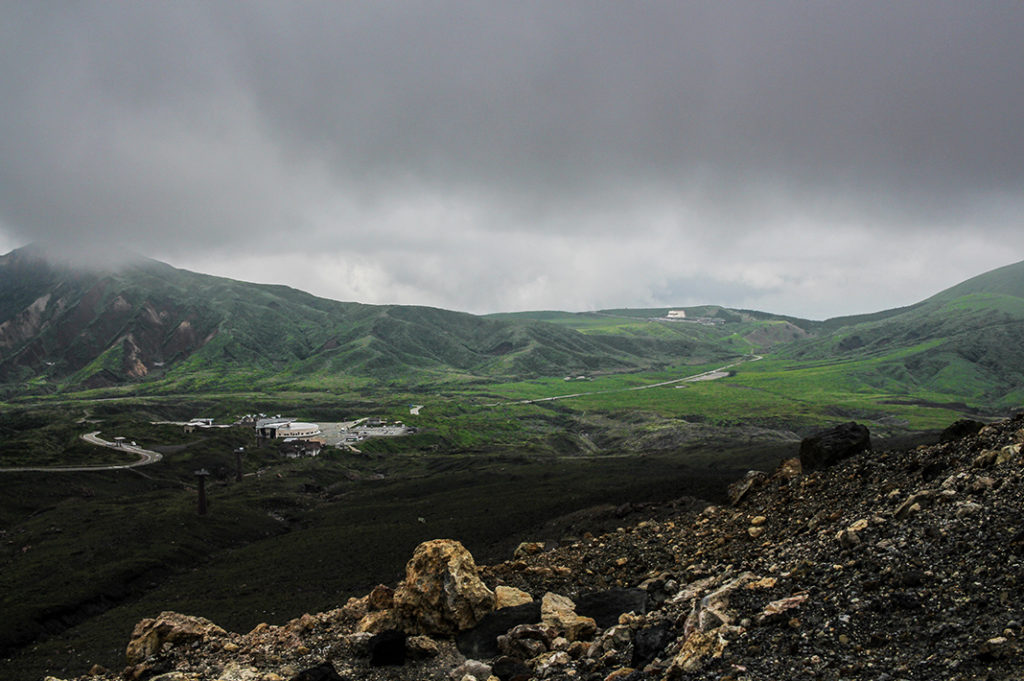
The Nakadake peak has a crater that still erupts regularly—much to the dismay of these locals. Perhaps most notably in recent years was the eruption that occurred 6 months after the devastating Kumamoto earthquake in 2016. A volcanic plume sprayed 11km skyward with ash and small rocks raining down upon the surrounding towns and farms.
Despite the potential dangers, Mount Aso is a popular attraction. There are museums, hot springs and walking and horse riding trails to better appreciate the dynamic and dramatic landscapes.
Man vs Nature
Arriving in the visitor car park of Nakadake peak, we kill the engine, cutting the orchestral music mid-crescendo. Through the windows, we see multiple warning signs positioned all around the rocky, devastated landscape. Outside, a giant cloud billows from the crater and speakers blare out warnings in four languages. The icy, high-altitude wind soon tears through our bodies and we don extra layers before carrying on.
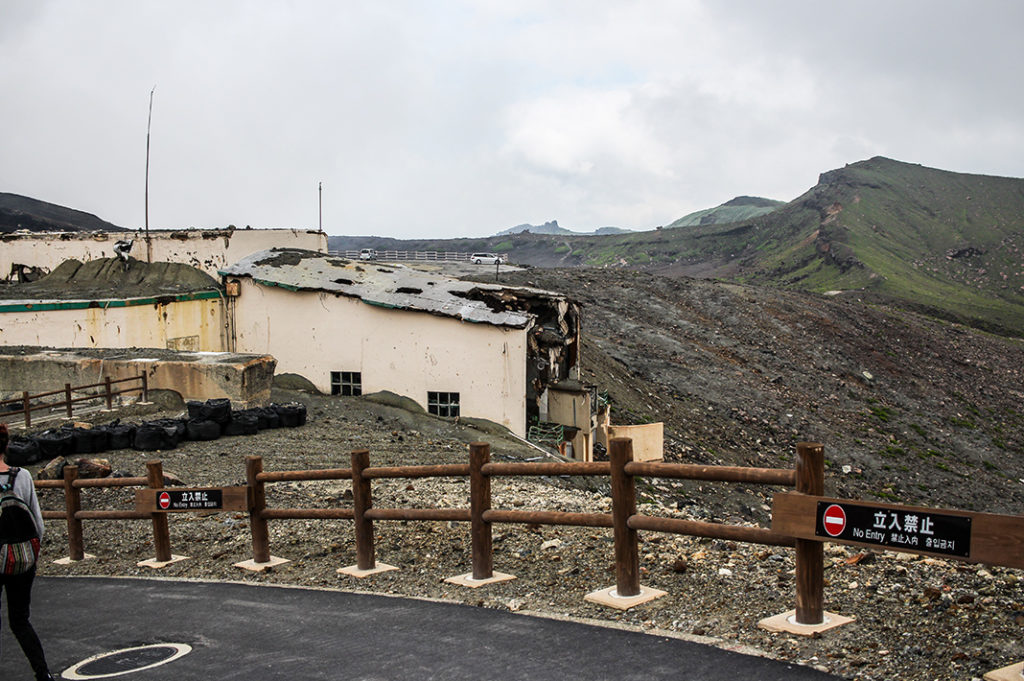
Just beside the car park sits the defunct ropeway station. Damaged in 2016, it remains closed in early 2020, with a shuttle bus replacing the service. The roof is caved in, the cables are no longer attached and a series of detached pylons descend downhill. The extent of the damage is like something from a war zone; in this case it’s nature vs man and nature appears to be winning.
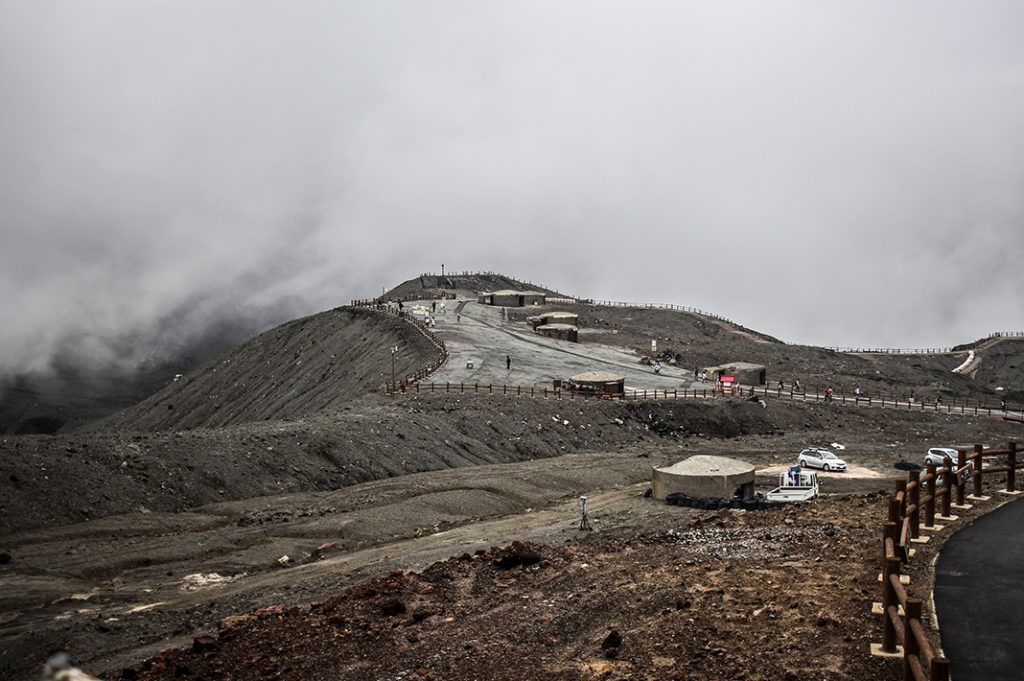
I begin coughing from the volcanic gas within the first minute. I heed the warnings, holding some wet tissues over my nose and mouth so I could explore without adverse reaction. The signs all warn people with asthma, bronchitis or heart problems to avoid getting too close to the crater. At this point, I wonder if anyone should really be up here.
Looking into the crater
As we peer down through the huge undulating clouds, we catch glimpses of Lake Yudamari’s signature milky green water.

According to a report by the Japan Meteorological Agency, the water is usually around 60 degrees celsius and fairly calm. When active though, it begins to boil and the toxic volcanic gases billow out. Before long, staff usher everyone back to a safe distance as the warnings continue to blare from the speakers.
Exploring the volcanic landscape
Chilled to the bone from the cutting wind, we take a quick look around at the observation areas and enjoy the panoramic views before heading off.
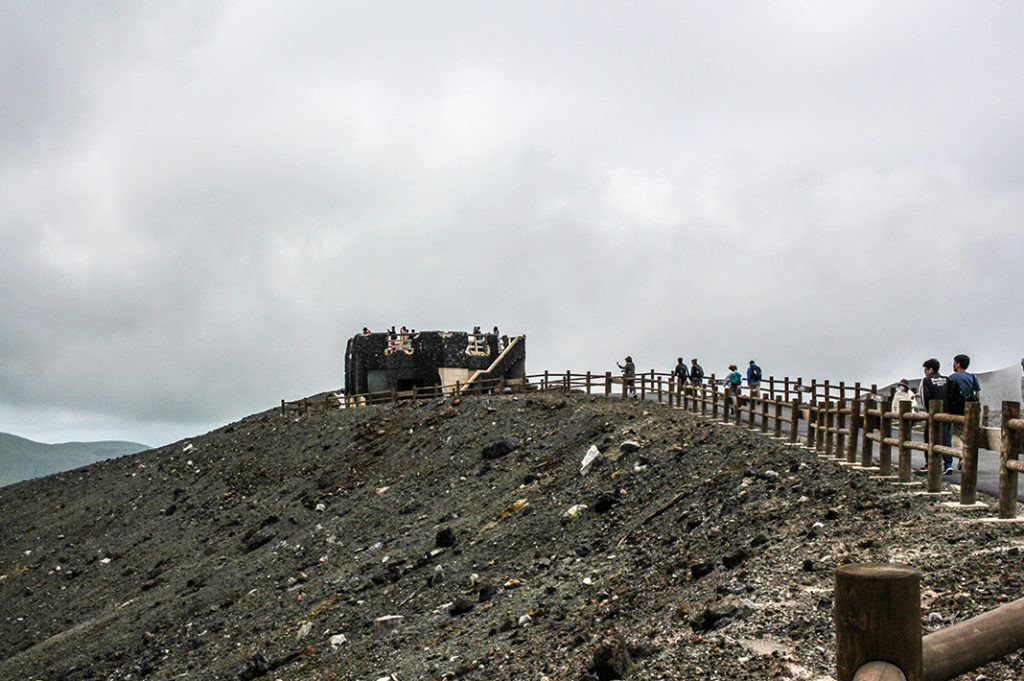
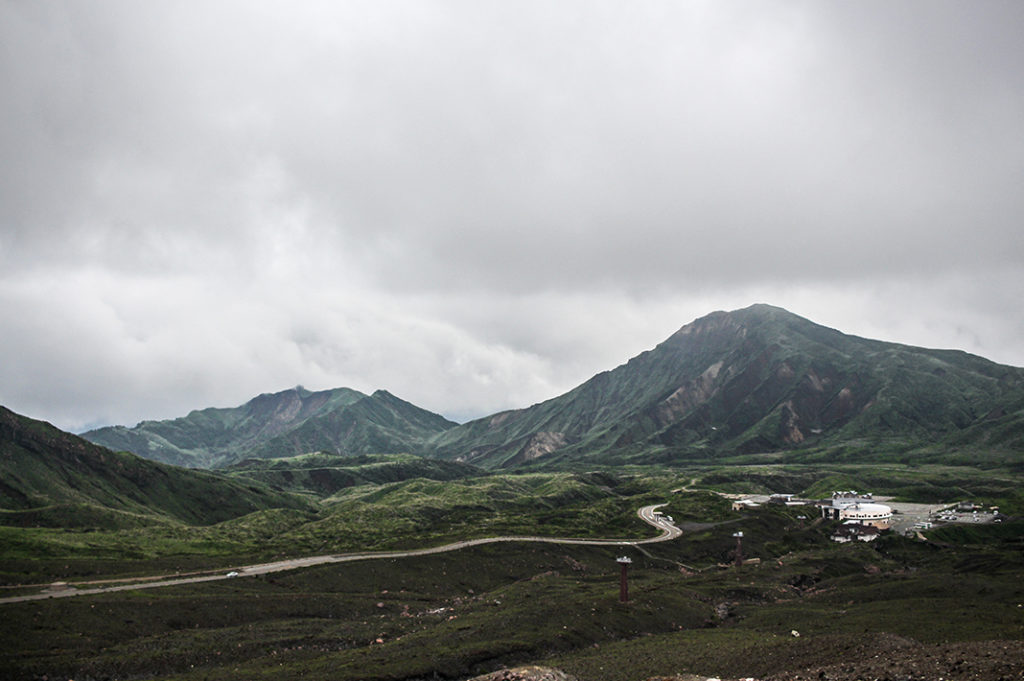
We didn’t have the ideal weather conditions for a high altitude volcano visit, true. But the gloomy weather certainly matched, and even intensified, the experience for us.
Safety First
Volcanoes can be volatile so make sure you listen to the warnings and stay out of restricted areas. It’s always advised to check the current conditions before attempting a visit, as access will be restricted at times.
Accessing Mount Aso
Access is generally by car, with a toll road approaching the mountain. The easiest public transport route from Kumamoto is by bus. Ride the local bus opposite Hotel Nikko to JR Aso Station “Aso Eki Mae” (almost 2 hours, 14 stops). From there, catch the bus heading to Asosan Nishi Station (Mount Aso), around 35 minutes.
From Kumamoto City, it’s also possible to get a train on the Hohi Line to Higo-Ozu Station. This is about half way, so you’ll need to get a bus the rest of the way. This extra step and transport mode seems unnecessarily complicated, though.
Once at Asosan Nishi Station, it is possible to reach the Nakadake crater on foot in thirty minutes. Alternatively, there is a “Mt. Aso Loop Shuttle” bus running in place of the ropeway. However, this also stops during volcanically active periods. IF you’re taking public transport, Best to allow 3 hours public transport either way.
Name: Nakadake Crater at Mount Aso
Open: Roughly 9–5, check website for seasonal hours and access restrictions.
URL: http://www.aso.ne.jp/~volcano/eng/
Post by Japan Journeys.



